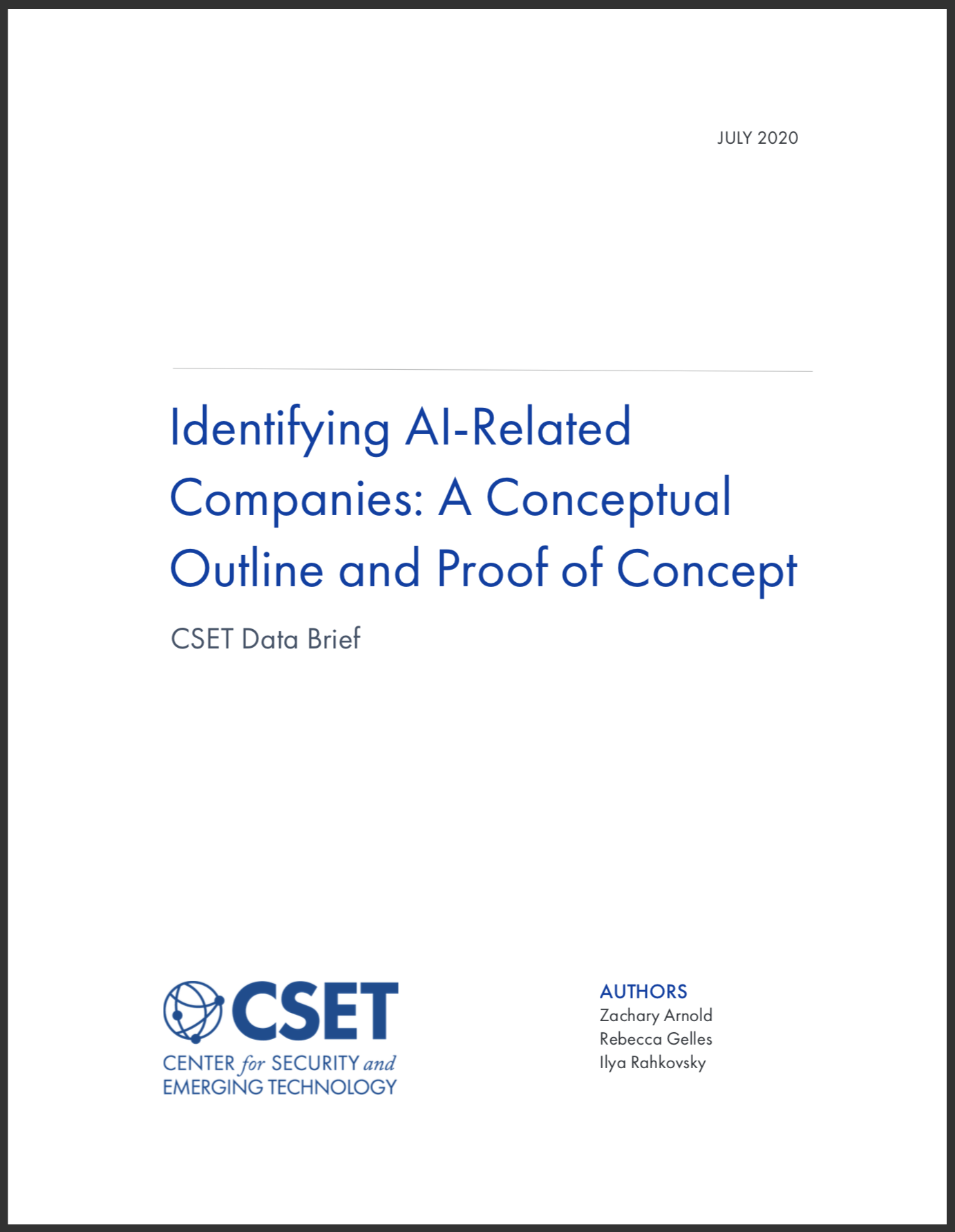Identifying what constitutes an “artificial intelligence company” is useful for many policy and analytic tasks. However, companies relate to AI in different ways. Some dimensions of AI relevance will be more important than others for any given task, and many are difficult to capture in data. With these challenges in mind, CSET is developing a flexible, multi-source, data-driven framework for identifying AI-related companies. In this data brief, we explain our efforts and present a test version. We show that the metrics and data sources chosen to define AI relevance strongly affect which companies qualify as “AI.”
Many high-profile tech companies count as top “AI companies” according to some plausible metrics, but not others:
| Rank | By recent PhD hires from top U.S. AI programs | By AI publications, worldwide | By top AI conference papers, worldwide | By AI patent families since 2010, worldwide |
| 1 | Google* | Microsoft | Microsoft | IBM |
| 2 | Google* | Google* | Microsoft | |
| 3 | Microsoft | Siemens | Siemens | Google* |
| 4 | Amazon | Samsung | Yahoo | Samsung |
| 5 | Apple | Philips | Alibaba | Siemens |
| 6 | Alphabet† | Yahoo | NEC | Intel |
| 7 | IBM | Mitsubishi | Sony | |
| 8 | Uber | Intel | Amazon | Philips |
| 9 | Intel | Bosch | NEC | |
| 10 | DeepMind | Huawei | Mitsubishi | Baidu |
† Excludes Google and DeepMind
At the same time, many somewhat lower-profile companies, such as Siemens, Mitsubishi, Bosch, and NEC, qualify as top “AI companies” according to these metrics. The metrics are examined in greater detail in this report, and the full results of the test framework are available online.
